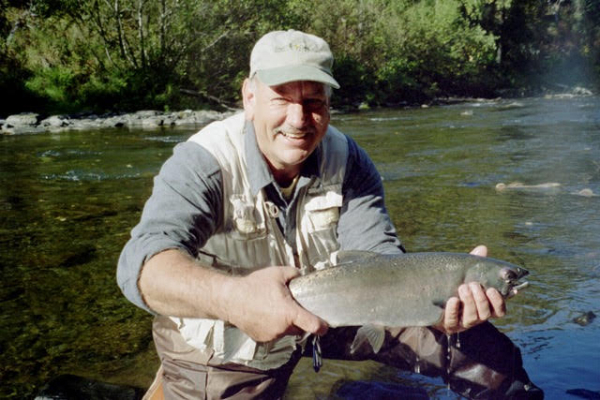
|
Anniversaries are always a good time to take stock. Saturday, September 24, marks the 50th anniversary of National Hunting and Fishing Day. Were it not for two important conservation laws, there might not be much to celebrate in the out-of-doors today.
The Wildlife Restoration Act (Pittman-Robertson) became law in 1937, requiring firearms and ammunition manufacturers’ excise taxes on select goods to fund conservation. Congress added archery gear to the mix 50 years ago. The Sport Fish Restoration Act (Dingell-Johnson) did the same for fishing tackle, coming along in 1950. The two laws combined have done more for conservation and fishing and hunting than one can fully comprehend.
Right out of the chute in 1937, the Utah Division of Wildlife Resources put Pittman-Robertson funds on the ground in what is today’s Ogden Bay Waterfowl Management Area in the Great Salt Lake. That piece of public land provides an enormous amount of waterfowl habitat—and public hunting opportunity. The bar had been set high from the start, and a cascade of successes followed through the years. Earlier this year, Pittman-Robertson funds paid for the acquisition of the 84-sqaure-mile L-Bar Ranch in northern New Mexico adding to and quadrupling the size of the New Mexico Department of Game and Fish’s Marquez Wildlife Management Area—public land where rocky mountain elk, mule deer, and Merriam’s wild turkey abound.
Between those bookend land purchases, Pittman-Robertson has provided the funds for state fish and wildlife agencies to acquire delta marsh in Mississippi, bayou in Arkansas, flooded timber in New York, prairie potholes and pheasant fields in the Great Plains, deer, grouse, and squirrel woods in the Midwest, all public wildlife management areas. In total, 36 million acres of wildlife habitats nationwide, nearly equal to the size of Iowa, are managed for wildlife and public access by state fish and wildlife agencies.
Only a few decades ago, white-tailed deer were not such a common sight. Not true today. And consider this: elk have returned to several eastern states, Kentucky, Tennessee, Pennsylvania, Michigan, Wisconsin, and Arkansas. Virginia holds its first elk hunt starting next month—its first elk season in modern times.
If you like to punch holes in paper with a small-caliber firearm, practice your bow draw, shoot clays, or sight in your rifle for you next big game hunt, public target shooting ranges are there for you, from Alaska to Florida. In the last three years, more than 850 ranges have been designed, built, or operated with Pittman-Robertson funding. A new range opened in Fairbanks last month and newest celebrates its grand opening next week in Palm Beach, Florida.
On the fishing side, Dingell-Johnson provides the needed funds for day-to-day operations in fisheries management in state agencies. Biologists need boats and fuel and nets, and specialized gear to get the job done, to assess and manage fish populations in the wild.
Fish hatchery work is labor-intensive; in 2021 alone, 321 state fish hatcheries turned out one billion fish of more than 75 sport fish species into public waters.
Let us break hatchery work down further: 30 states raise largemouth bass; 23 states raise northern pike, pickerel, and muskie; 32 states raise walleye and sauger; 41 states raise rainbow, brook, brown, lake, golden, and cutthroat trout; 21 states raise and stock white bass and striped bass. Dingell-Johnson pays for all this work.
And let us not forget boater and angler access. Dingell-Johnson has funded 9,000 boat launches across the country. Other access projects are less conspicuous, such as roadside pullouts to access streams. The biggest event in competitive angling, the Bassmaster Classic, is often centered at boat ramps paid by Dingell-Johnson funds, maintained and operated by state wildlife agencies.
The 85-year-old partnership between state wildlife agencies, the U.S. Fish and Wildlife Service, and industry has yielded great conservation successes that make National Hunting and Fish Day all the more meaningful. The hardware of fishing and principal tools of hunting and target shooting are the currency of conservation. This year, $1.1 billion was available under Pittman-Robertson and $399 million under Dingell-Johnson.
I encourage you to take someone new or reconnect with friends and family, fishing and hunting. Introduce them to the workings of nature—and reacquaint yourself with the innocent wonder revealed in a creek’s eddies or in the orange capillaries of first light breaking in the deer stand.
— Robert Curry
Curry is Deputy Assistant Director, U.S. Fish and Wildlife Service—Wildlife and Sport Fish Restoration. He is stationed in Falls Church, VA